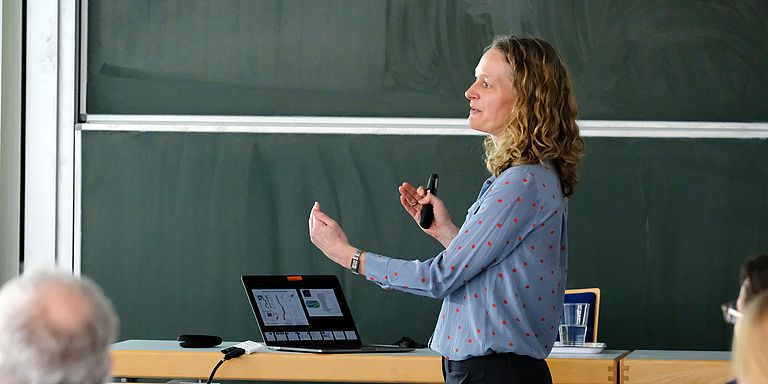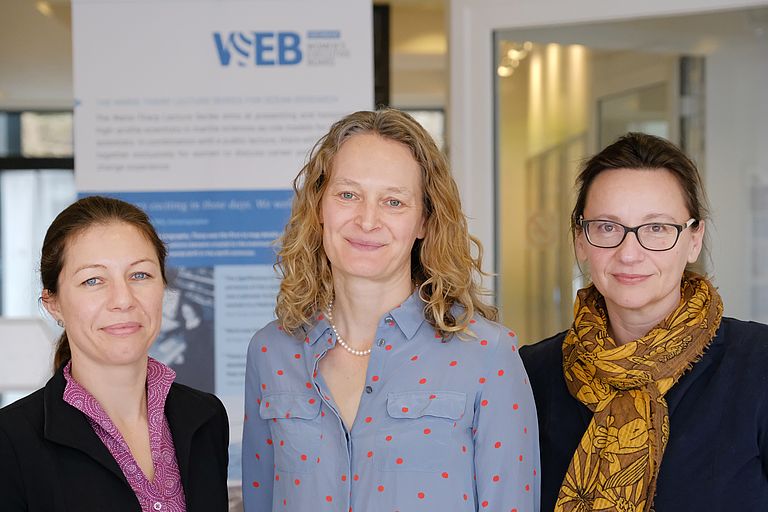On the trail of climate change
Professor Bärbel Hönisch from the Columbia University gives Mary-Tharp lecture at GEOMAR
23 March 2018/Kiel. How do rising atmospheric CO2 levels affect the climate and life in the sea? This question occupies science and society alike. In order to understand changes in the global carbon cycle and the consequences for the climate, scientists look into the Earth's past and to the great climate changes that took place several million years ago. So-called climate proxies, meaning quantifiable indicators for chemical and physical parameters that can no longer be measured directly, help to reconstruct past climatic processes. Understanding climate proxies better is one of the goals of Professor Bärbel Hönisch of the Department of Earth and Environmental Sciences of the Lamont-Doherty Earth Observatory at Columbia University. She specializes in the application of boron isotopes from marine carbonates to reconstruct past variations in marine carbonate chemistry and atmospheric CO2 concentration. Yesterday, Bärbel Hönisch gave insights into her research in a presentation as part of the Marie Tharp Lecture Series at GEOMAR. She showed how samples from the Cenozoic (about 66 million years ago), as well as living planktonic foraminifera, can help to better understand past episodes of climate variability. She also explained how further improvements in the proxy application could provide a closer look into the climate history of our planet.
Prof. Dr. Bärbel Hönisch is a professor at Columbia University in New York, USA. After studying biology at the University of Bremen, she earned her doctorate at the Alfred Wegener Institute Helmholtz Centre for Polar and Marine Research on the application of stable isotopes from foraminifera shells for the reconstruction of climatic conditions. After receiving her doctorate, in 2002 she moved to the Lamont-Doherty Earth Observatory, a geoscientific research institute at Columbia University. Bärbel Hönisch has been a professor at the Dept. of Earth & Environmental Sciences of Columbia University, NY, since 2007 and became a member of the GEOMAR scientific advisory board in 2018.
The "Marie Tharp Lecture Series" is hosted by the Women's Executive Board (WEB) of GEOMAR. The WEB invites internationally renowned female scientists who present their scientific work in Kiel, but at the same time serve as role models for young female scientists. As for previous lectures, after the public lecture, a get-together took place only for female scientists. There, young female researchers can exchange ideas with more experienced female colleagues and discuss possible career paths.




